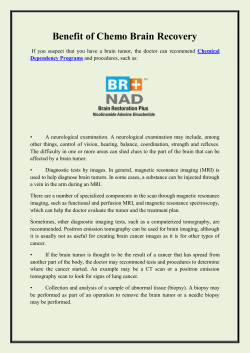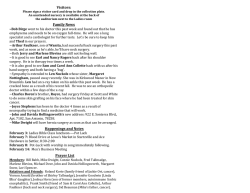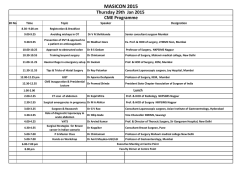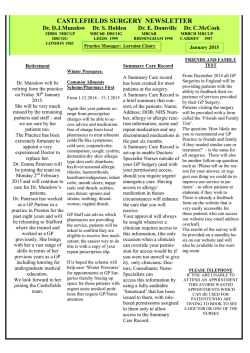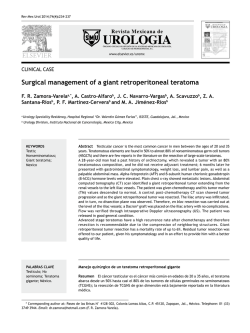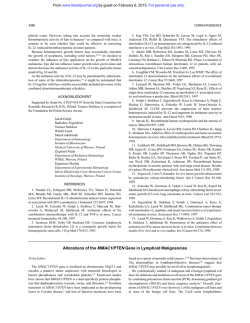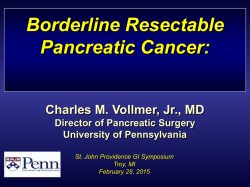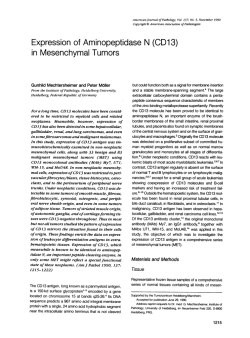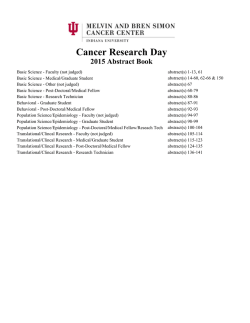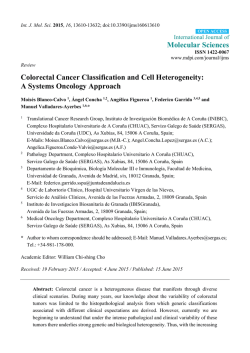
1-s2.0-S1569905614500590-main
B87: Surgical and conservative management of small renal tumors Štarolis E.1, Silinis D.1, Bakavicius A.2, Karvelis Z.2 1 Vilnius City Clinical Hospital, Dept. of Urology, Vilnius, Lithuania, 2Vilnius University, Faculty of Medicine, Vilnius, Lithuania INTRODUCTION & OBJECTIVES: Increasing number of small renal tumors(SRT), defining as mass within the kidney not exceeding 4 cm, are detecting on radiological investigations because of several reasons, often not related to urological patology - accidently. Objective of this study is to evaluate results of surgical treatment and conservative management of SRT in our department MATERIAL & METHODS: This is retrospective study of 88 patients with SRT (cT1a), treated in our department since January 1,2008, to December 30, 2013. 75 of those patients have been operated for 77 tumors : radical open or laparoscopic nephrectomies (RN) - 28, partial nephrectomies - 47. For 13 patients with more comorbidities and elderly age conservative treatment has been chosen (ablative treatment or active surveilance (AS). Retrospective data collected from case reports of our hospital and cooperating outpatient facilities.Postoperative and AS follow up has been performed every 6 months by ultrasound (US) scaning, and abdominal contrast CT scan - yearly. Risk of progresion during AS evaluated as shortening of tumor volume doubling time(<12 months), tumor diameter increasing to 4 cm, and appearance of symptoms.Charlson comorbidity score (ChCS) has been used for evaluation of comorbidities. RESULTS: Data of 47 patients after RN and PN and 11 patients on AS included in the study with mean follow up of 30,9 (5-70) months. 25 patients were lost of follow up after surgery, and 2 patients reffered for ablative treatment to the other institution. US guided tumor biopsies were performed in 22 of 75 (29,3%) surgery group and 8 of 13 (61,5%) conservative management group. There was 1 inconclusive biopsy result and 3 cases of tumor upgrading after surgery (2 - from G1 to G2, 1 - from G2 to G3). No significant bleeding or other complications following biopsy observed. Mean tumor size in surgery group was 30,1 mm, in AS group - 24,96mm at the time of diagnosis, 25,86mm - at the last follow up. Average tumor growth rate was 0,35mm/year. Overall survival (OS) in surgery group was 93,6%, cancer specific survival (CSS) - 100%. 1 case of metastatic progresion observed in patient with 38 mm tumor, but with invasion into the renal vein on pathology report (clasified as pT3b). In AS group OS was 81,2%, CSS - 100%. One patient has been operated because of increased tumor size growth rate in 18 months ( from 22,8 to 30,4 mm - 32% by diameter, 137% - by volume. ChCS was significantly higher in AS group vs surgery group (4,64±0,93 vs 2,64±0,91; p<0,05). Although OS has been found higher in surgical treatment group, CSS appears to be 100% inboth groups and tumor progression observed in 1 case in each group. CONCLUSIONS: Although surgery - RN or PN (when it is technically possible) remains main treatment strategy for SRT, AS is acceptable alternative for elderly patients with higher comorbidity. ChCS together with wider use of US guided tumor biopsies could be helpful for selecting patients for AS.We found OS and CSS comparable in both groups. More prospective trials with evaluation of comorbidities and biopsy results are expected to evaluate efficacy and safety of conservative treatment strategies for this group of patients Eur Urol Suppl 2014; 13(2): e1205 e1205
© Copyright 2025
